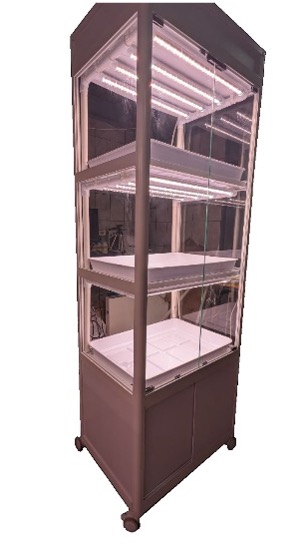Catalog
Search
882 products
View:
- Selected: 1Applying
- Selected: 0Names
- Selected: 0Manufacturer
- Selected: 0Made in
- Selected: 0Additional
View:
882 products
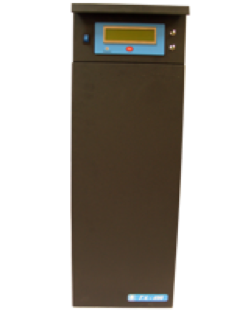
Nitrogen Generator GA-1200
from
516 000 ₽
The nitrogen generator is designed to create an inert atmosphere, fill low-pressure tanks, "wash" test tubes with inert gas and other applications that require a large, by laboratory standards, nitrogen consumption with reduced requirements for its purity.
Technical specifications
Volume fraction of nitrogen is not less than 99.0 % by volume (including impurities of inert gases — argon, neon, helium)
Volume fraction of oxygen is not more than, 1.0 % vol.
Volume fraction of water vapor is not more than 0.002 % vol. (20 ppm)
Maximum nitrogen capacity:
at an inlet air pressure of 7 ati is at least 1380 l/h (23 l/min)
The time of setting the operating mode for single-shift operation is no more than 30 min
Minimum inlet air pressure is 7 ati
Maximum allowable inlet air pressure is 8.5 ati
Compressed air consumption, at nominal inlet pressure and maximum flow rate is no more than 150 l/min
Power consumption is not more than 200 VA
Overall dimensions, (width x depth x height) are not more than 230x580x680 mm
Weight is not more than 38 kg
Working conditions:
ambient temperature, C°, from +10 to +35
Electric power supply from
single-phase AC mains voltage, V, 220± 10%
and frequency, Hz, 50 ± 1
Average full service life is at least 6 years
The generator for electrical safety meets the requirements of Class 1, type H according to GOST 12.2.025-76
NPP Himelektronika
Moscow
Produced in: Moscow

LABORATORY CATALYTIC PLANTS FOR PETROCHEMICALS
Catalytic reforming is used to produce high-octane components of automobile gasoline, flavored concentrate for the production of individual aromatic hydrocarbons, as well as technical water. Isomerization of paraffin hydrocarbons is used to increase the octane number of C5 - C6 oil fractions by converting paraffins of normal structure into their isomers having a higher octane number.oroda.
Hydrotreating of distillates is used to improve the quality and stability of light distillates, raw materials of catalytic cracking, as a result of the use of reactions of destructive hydrogenation of organosulfur compounds and hydrogenation of unsaturated hydrocarbons.
Catalytic cracking is used to obtain additional amounts of light petroleum products, namely high-octane gasoline and diesel fuel, by decomposition of heavy oil fractions in the presence of a catalyst.
Alkylation of isobutane with olefins is used to produce gasoline fractions with high stability and detonation resistance using the reaction of interaction of isobutane with olefins in the presence of a catalyst.
Polymerization (oligomerization) of olefins is used to produce low molecular weight polymers (oligomers) of propylene and butylene used as motor fuel or raw materials for petrochemical synthesis.
Hydrocracking is used to obtain an additional amount of light petroleum products by catalytic decomposition of heavy raw materials in the presence of hydrogen.
Thermal cracking and Visbreaking is used to obtain in the mode of thermal cracking – additional amounts of light petroleum products by thermal decomposition of residues from oil distillation, in the mode of visbreaking – improving the quality of boiler fuel
Coking is used to produce petroleum coke and an additional amount of light petroleum products from heavy residues. The raw materials are tar, thermal cracking residue, heavy gas oil. The products are, for example, petroleum coke.
NPF "META-KHROM"
Yoshkar-Ola
Produced in: Yoshkar-Ola, Mari El
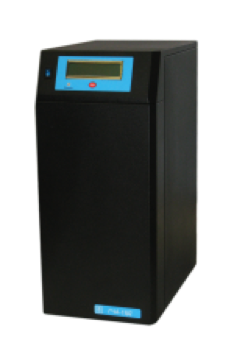
Pure nitrogen generator GCHA-21D
from
276 000 ₽
An analogue of GCHA-21, but equipped with a built-in system of catalytic purification of the resulting nitrogen from hydrocarbons. GCHA-21D nitrogen generators are designed to produce nitrogen of the highest purity in laboratory conditions.
The warranty period of operation of the generator is 18 months from the date of sale by the manufacturer.
Technical specifications
The grade of nitrogen produced according to GOST 9293-74 is high purity, grade I
The volume fraction of nitrogen is not less than, % vol.
(including impurities of inert gases: argon, neon, helium) 99,999
The volume fraction of oxygen is not more than, % vol. (ppm) 0.0005 (5 ppm)
The volume fraction of water vapor is not more than, % vol. (ppm) 0.0007 (7 ppm)
The volume fraction of hydrogen is not more than, % vol. (ppm) 0.0002 (2 ppm)
The volume fraction of the sum of carbon-containing compounds in terms of methane is not more than, % vol. (ppm)
(with a concentration of methane in the supply air not more than 5 ppm)* 0.00001 (0.1 ppm)
Maximum nitrogen capacity is not less than 21 liters/hour (350 ml/min)
Nominal output pressure of nitrogen is 4 ati
The time of setting the operating mode for single-shift operation is no more than 45 min
Nominal inlet air pressure is 6 ati
Maximum allowable inlet air pressure is 7 ati
Minimum inlet air pressure is 5 ati
Compressed air consumption, at nominal inlet pressure is no more than 300 l/h (5 l/min)
Power consumption is not more that 110 VA
Overall dimensions, (width x depth x height) are not more than, mm 230x425x510
Weight, not more than, kg 25
Working conditions:
Ambient temperature, °C from +10 to +35
Electric power supply from a single-phase AC network with a voltage of 220 ± 10%
and a frequency of 50 ± 1 Hz
Average full service life is at least 6 years
The generator for electrical safety meets the requirements of Class 1, type H according to GOST 12.2.025-76
NPP Himelektronika
Moscow
Produced in: Moscow
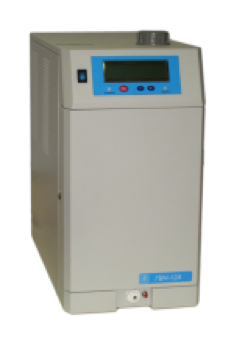
Pure Hydrogen Generator GVCH-12A
from
303 600 ₽
The device is equipped with an automatic regeneration system of fine filters, which reduces the maintenance of the device to a minimum. In terms of the totality of technical characteristics and ease of operation, it has no equal among similar laboratory hydrogen generators. The hydrogen capacity is 12 liters/hour (200 ml/min).
Technical specifications
Purity of hydrogen in terms of dry gas is about 99.9999%
Concentration of water vapor at 20OC and 1 atm is not more than 5ppm
Total hydrogen capacity, reduced to normal conditions is not less than 12 l/h
The range of the specified output pressure of hydrogen is from 3.0 to 6.1 ati
Stability of the output pressure of hydrogen is not worse than ± 0.02 ati
The time of setting the operating mode, with the output turned off is no more than 30 min
Volume of distilled water to be poured is 1.0 l
Distilled water consumption is no more 0.02 l/hour
Water consumption is 1.6 g/l of hydrogen
The average life of the replaceable cartridge of the deionization filter (at maximum performance and single-shift operation) is not less than 1 year
Average power consumption:
in stationary mode is no more than 180 VA
maximum (at startup) is no more than 220 VA
Overall dimensions of the generator, (width x depth x height) is not more than 230x470x450 mm
The mass of the generator is not more than 16 kg
Operating conditions:
ambient temperature, °C, from +10 to +35
powered by single-phase AC voltage 220 V(+10 -15)% and frequency 50 +1 Hz
The generator for electrical safety meets the requirements of Class 1, type H according to GOST 12.2.025-76
NPP Himelektronika
Moscow
Produced in: Moscow
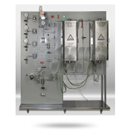
AUTOMATIC SIX-CHANNEL INSTALLATION
The unit is designed for testing fresh catalysts, deactivated in laboratory conditions and equilibrium (used in industry). The volume of the loaded catalyst is from 5 to 12 grams, the loading of raw materials (vacuum gas oil) is 1-3 grams. Conradson coking capacity should not exceed 10%. After cracking, the degree of coking of the catalyst is determined directly at the installation. Liquid and gaseous cracking products are analyzed by three gas chromatographs with automatic dispensers, which makes it possible to determine the degree of conversion and selectivity of the catalyst.
NPF "META-KHROM"
Yoshkar-Ola
Produced in: Yoshkar-Ola, Mari El
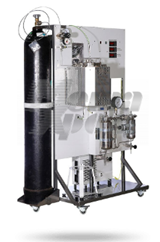
PILOT COKING PLANT. ISM CODE.413224.018
The unit is designed to simulate and study the processes of delayed coking occurring at elevated temperature and pressure in a stainless steel reactor made in the form of a flask with a spherical bottom and a removable lid. The installation allows you to obtain experimental data, select and optimize the parameters of the technological process, test various variants of raw mixtures, determine the material balance of the process, the characteristics of the process products.
Ambient temperature from +10 to +35C;
The relative humidity of the air is not more than 80% at a temperature of 25C;.
The power supply is a single-phase AC network with a voltage of 230-240V 50-60 Hz.
The average service life of the autoclave is 6 years.
TECHNICAL CHARACTERISTICS
Operating pressure range, MPa 0÷0.6
Reactor operating temperature range, 0C 50÷550
The discreteness of the temperature setting is 0C 1
Relative error of temperature maintenance, 0C ± 0.2
Reactor material steel 12x18N10T
Power consumption, kW not more than 3
Overall dimensions (HxWxD) 1600x1100x495
Weight, kg 240
Continuous operation mode
NPF "META-KHROM"
Yoshkar-Ola
Produced in: Yoshkar-Ola, Mari El
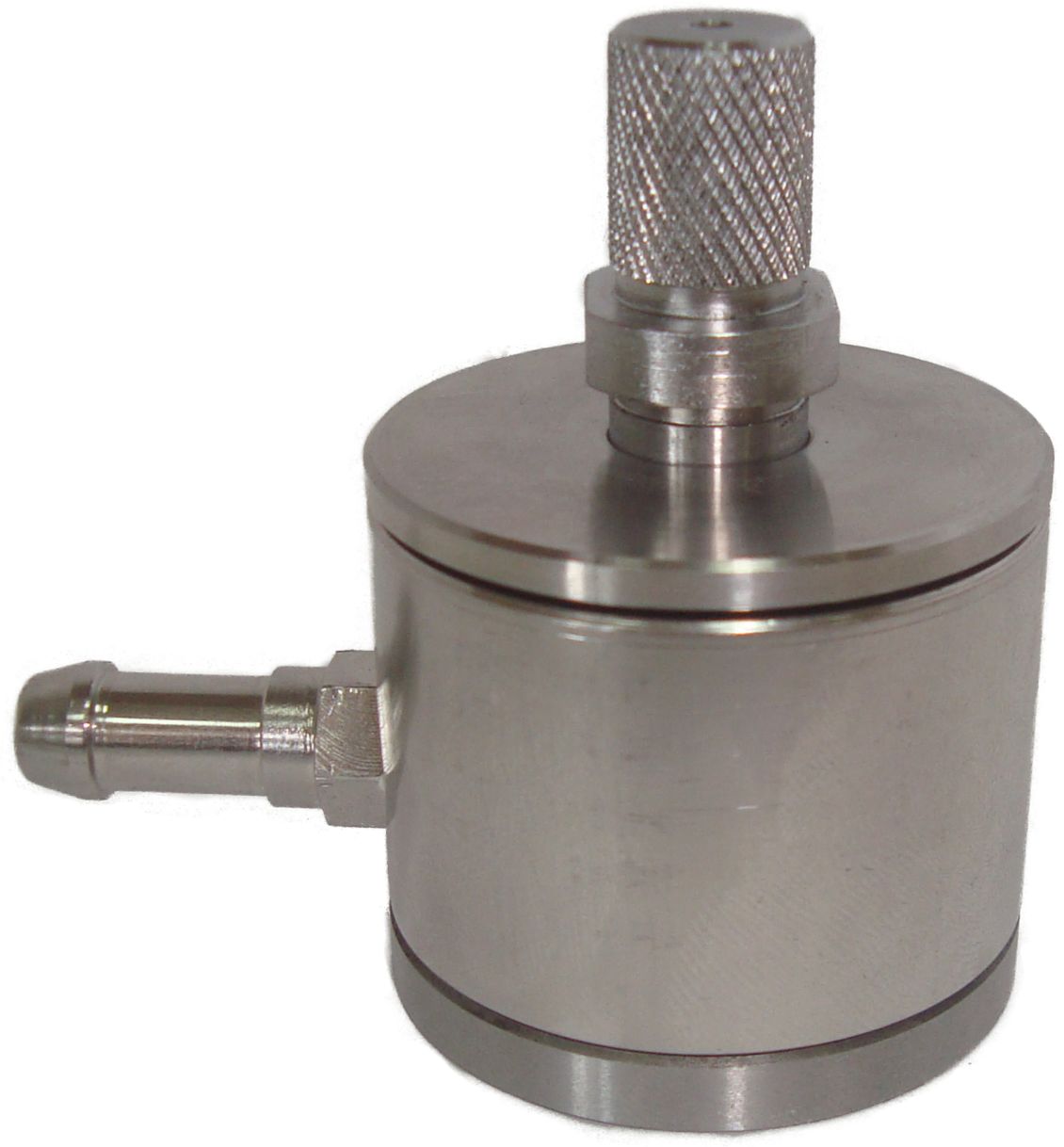
Mold for the manufacture of tablets with KBr diameter of 13 mm
It is intended for the preparation of samples in the form of compressed tablets consisting of the test substance in a mixture with microcrystalline potassium bromide (KBr). The mold is used in combination with the hydraulic press GP 200-13.
- the mold is made of high-quality alloy hardened steel
- to obtain better compressed tablets with KBr, the mold can be pumped out using a pre-vacuum pump. The customer can purchase the pump independently, or order it from the NPF “SIMEX”. Pumping out the mold is not necessary for most studies.
- the kit includes a special dispenser for placing the optimal amount of the pressed mixture in the mold
- to install the finished samples in the spectrometer, a holder of KBr tablets and D13mm substrate windows is used
SIMEKS
Novosibirsk
Produced in: Novosibirsk
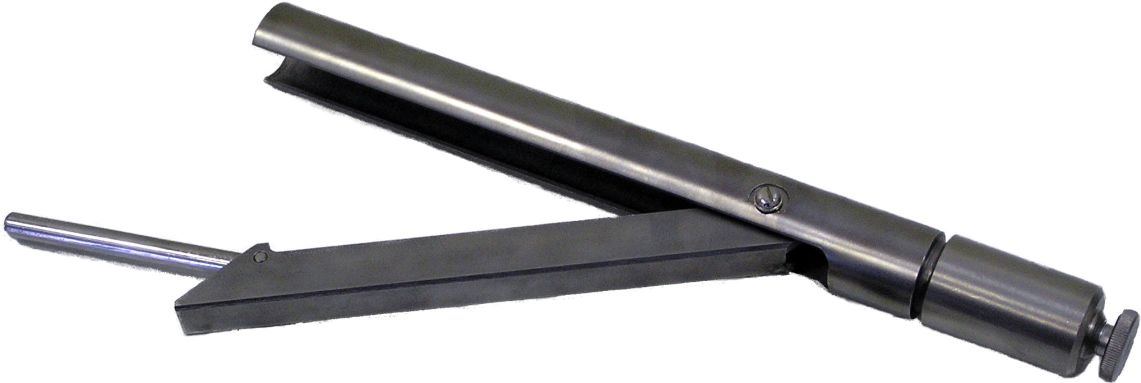
Manual mechanical press
Designed for the preparation of samples in the form of compressed tablets with a diameter of 3.5 mm, consisting of the test substance in a mixture with microcrystalline potassium bromide (KBr).
- the principle of operation of the device is based on creating the pressure necessary for pressing due to a mechanical lever system
- the press is made of high-quality alloy hardened steel
- for the manufacture of a tablet with a diameter of 3.5 mm, a minimum amount of the test substance and KBr is required
- for the study of finished samples on a Fourier spectrometer, a vertical or horizontal microfocusing prefix is used
SIMEKS
Novosibirsk
Produced in: Novosibirsk

Universal optical set-top box with zinc selenide element and integrated visualization system on an external monitor
It is intended for express analysis of various types of solid and liquid samples, including polymer particles, films and fibers, powdery substances, fragments of paint coatings, fuels and lubricants. The presence of an optical system for visual inspection of the surface under study with an increase of 75X ensures high efficiency when working with small samples – fragments of thin fibers, microparticles, etc. The universal clamp is equipped with a precision lever mechanism for quickly lowering the tip and a micrometer screw that allows you to pre–set the optimal degree of pressure - this ensures quick sample change and repeatability of the results during measurements. For convenience when working with liquid and paste-like samples, as well as in the ZDO mode, it is possible to rotate the clamping console by 180o. The console is equipped with two replaceable tips – with a spherical working part and with a flat hinged head.
A replacement table is used to register the specular and diffuse reflection spectra. The sample is located on the subject plane of the investigated surface downwards, the angle of incidence of the central beam on the sample is 45 °. The method is used to determine the spectral characteristics of optical parts, crystals, thin films on the surface, as well as to register the absorption spectra of large solid objects.
Transmission in the operating range of the spectrum, % of the input signal at least 30
The recommended number of scans when registering spectra is 25
Spectrum registration time at 25 scans (resolution 4 cm-1), sec 30
The depth of penetration of radiation into the sample, microns 5 – 15
Minimum area of a solid sample, mm 0.2 × 0.2
Minimum volume of the liquid under study, ml 1
Minimum dimensions of the fiber sample: cross-section diameter/length, mm 0.1/1
Substrate crystal material ZnSe CVD, Ge
Focusing spot diameter, mm 1
The angle of incidence of radiation (central beam) on the sample in the ZDO mode 45o
Magnification of the micro lens / total magnification of the visual channel 4X /75X
Field of view of the optical system, mm 2 X 2.5
Digital video camera resolution 640 X 480
Overall dimensions, mm 150×150×260
Weight, kg 2.15
• Allows you to study objects of small size (from 200 microns - depending on the geometry, surface quality and physico-chemical properties of the material)
• The attachment allows you to work without sample preparation, has a fixed adjustment of the pressure on the sample using a clamp equipped with color indicators
• Thanks to the removable flange with the NPVO element, a quick and convenient sample change and cleaning of the crystal surface is provided
• At a given optimal contact force, the method provides high quality and repeatability of results due to the absence of influence of the thickness of the substance layer on the shape of the spectrum and the intensity of the absorption bands
• The sample retains its original physical and chemical properties and, if necessary, can be further investigated by other methods
SIMEKS
Novosibirsk
Produced in: Novosibirsk
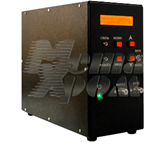
HIGH PRESSURE SYRINGE PUMP
High-pressure syringe pump (NSHVD-1) with a continuous highly stable fluid flow in a wide flow range of 0.01-10ml/min. with the functions of introducing a correction factor after calibration, setting the volume or pumping time, displaying the amount of pumped, temporary suspension of pumping with automatic resumption, the ability to adjust the flow and volume of the pumped liquid during operation without stops, automatic shut-off of the pump when the set maximum pressure is exceeded, remote control, compensation for changes in the mass flow rate of the liquid pumped by the pump when its temperature changes.
TECHNICAL CHARACTERISTICS
Flow range, ml/min 0.01 - 10
Dosing error, % 0.2
The discreteness of the task, % 0.01
Maximum working pressure, 12 bar
Lifting height of the suction fluid, m2
Accuracy of pressure measurement, % 0.2
The maximum liquid temperature is 60 °C
Modbus RTU communication interface
Power supply AC 220 V, 50 Hz
Dimensions: W x D x H, mm 140 x 335 x 270
Materials in contact with the pumped liquid glass, fluoroplast, stainless steel 316 L
NPF "META-KHROM"
Yoshkar-Ola
Produced in: Yoshkar-Ola, Mari El
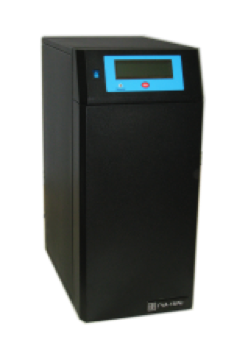
Pure nitrogen generator GCHA-18-K
from
396 000 ₽
The characteristics of the device are similar to the GCHA-18 model;
the difference is that the oil–free compressor built into the GCHA-18-K generator provides complete autonomy of the device.
The warranty for the device is 18 months, for the built-in compressor-12 months from the date of sale.
NPP Himelektronika
Moscow
Produced in: Moscow
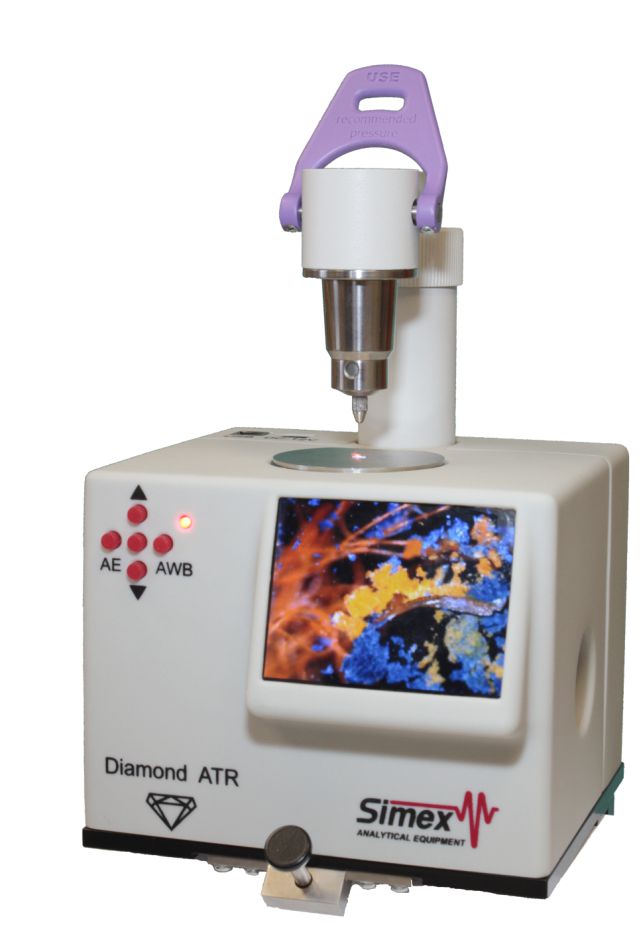
Universal set-top box of NPVO and ZDO with a diamond element and a built-in mini-monitor
It is designed for measurement by the method of disturbed total internal reflection with simultaneous visualization of a micro-object on an integrated and external monitor, as well as by the method of mirror-diffuse reflection with an angle of incidence of 45o at the upper location of the sample.
The prefix in the mode of a single NIP is used to register absorption spectra:
liquids of any degree of viscosity (solutions, suspensions, oils, etc.), including those with high chemical activity;
solid objects of arbitrary shape, including samples with very high hardness (any polymers, fragments of paint coatings, etc.);
powdery substances, including powders with very high hardness (drugs, pharmaceuticals, explosives, inorganic compounds);
samples in the form of thin tapes;
samples in the form of fibers.
The maximum hardness and chemical resistance of the diamond significantly expand the possibilities of the method; there is no need for periodic replacement of the crystal.
The set-top box allows you to register spectra without time–consuming sample preparation, and the presence of a visual inspection system of the studied surface with a high-quality video camera and a built-in high-definition mini-monitor increases efficiency when working with small samples - fragments of thin fibers, microparticles, etc. The built-in monitor has the functions of digital 10X zoom, inverting, etc. The image can be simultaneously displayed on the computer screen (using a USB interface) and then saved as a file.
The removable flange provides a quick and convenient sample change and cleaning of the crystal surface. The design with a diamond element protruding above the base plane of the NPVO allows you to study samples with sufficiently large overall dimensions.
The high quality and repeatability of the results is achieved due to the absence of the influence of the thickness of the substance layer on the shape of the spectrum and the intensity of the absorption bands.
The sample retains its original physicochemical properties and, if necessary, can be further investigated by other methods.
The universal attachment clamp is equipped with a precision lever mechanism for quickly lowering the tip and a micrometer screw that allows you to pre–set the optimal degree of pressure - this ensures quick sample change and repeatability of the results during measurements. For convenience when working with liquid and paste-like samples, as well as in the ZDO mode, it is possible to rotate the clamping console by 180o. The console is equipped with two replaceable tips – with a spherical working part and with a flat hinged head. The high hardness of the diamond allows the use of large clamping forces, which is the determining factor for obtaining high-quality spectra. A replacement table is used to register the specular and diffuse reflection spectra. The sample is located on the subject plane of the investigated surface downwards. The method is used to determine the spectral characteristics of optical parts, thin tapes on the surface, crystals, and other large solid objects of arbitrary shape and size.
SIMEKS
Novosibirsk
Produced in: Novosibirsk
